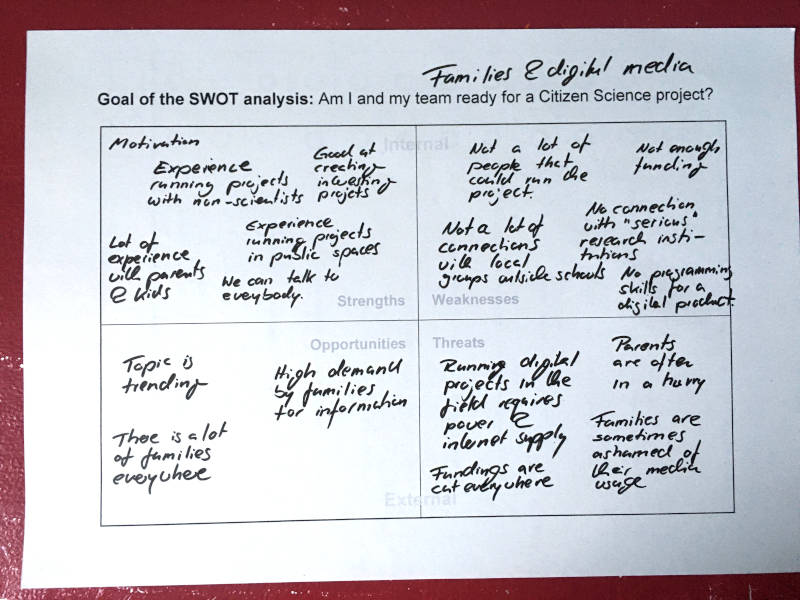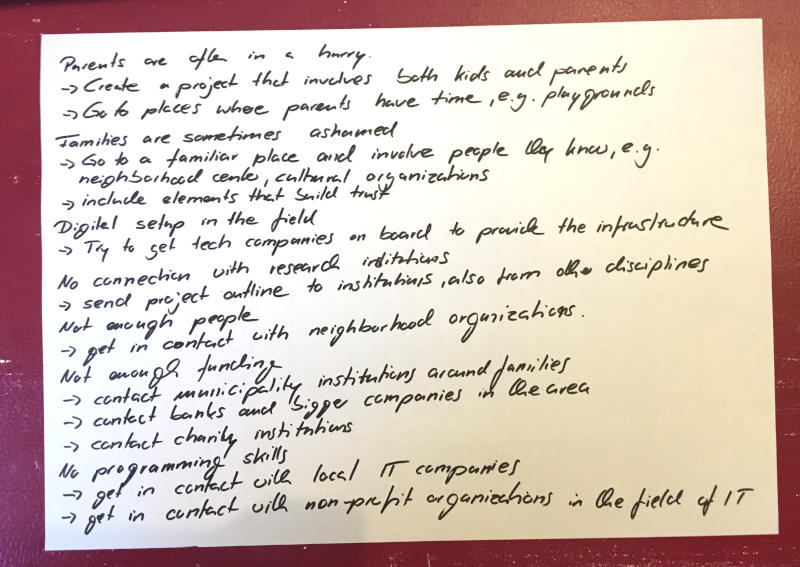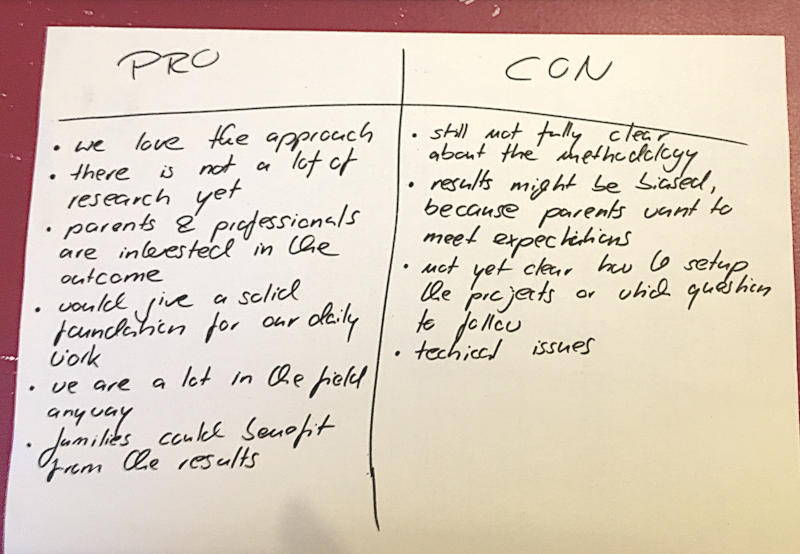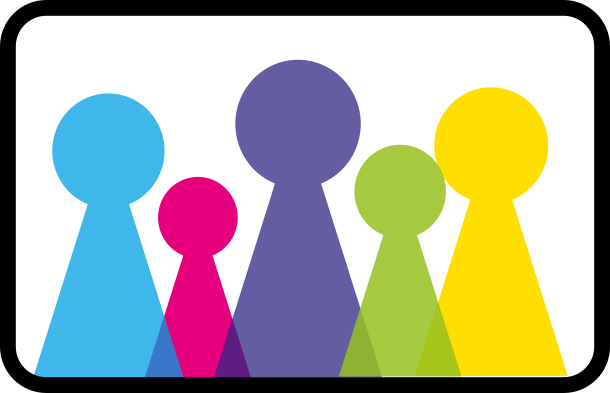Aims of the activity and description of target group
Participants explore the possibilities and opportunities for carrying out a citizen science project and check whether it makes sense for their environment to use this type of project. The activity is suitable for researchers and citizens in a group or individual learning setting. Activities 1 - 3 of this session should be carried out beforehand.
Resources, Materials needed
- Questionnaire „Modul2_1-4-StatusCheck_Fragebogen“ (printed or as digital version)
- Template „Modul2_1-4-SWOT_Analyse“ (printed or as digital version or just scribble the structure with pen & paper)
Duration
60 minutes
Step 1 - Questionnaire (15 minutes)
Complete the questionnaire "Module2_1-4-StatusCheck_Questionnaire" and check your results. Make a list of the things you want to do before you continue with the next session or topics that you further need to investigate.
Step 2 – SWOT analysis (30 minutes)
SWOT stands for Strengths, Weaknesses, Opportunities and Threats. This method is used to evaluate project or business ideas at an early stage in order to identify aspects that need to be taken into account as the project progresses.
The aim of the SWOT analysis is to find out whether you and your team are ready for a Citizen Science project. You can use the template for the SWOT analysis or simply scribble it down with pen and paper. Ideally, the SWOT analysis is carried out in a group. You can train the application of this method and use it later with your project team.
Think about what you and your potential team do well or not so well or where you might have changes and obstacles.
Internal: Strengths and Weaknesses
- What do you do well or what are positive aspects? E.g. good team spirit, curiosity, passion for the topic, experience in working with non-scientists, existing funding for a project, good location,...
- What is not going so well? E.g. lack of funding, lack of time, lack of experience, problematic deadlines, no connection to people outside the organization,...
External: Opportunities and Threats
- What could positively influence your project from the outside? E.g. a current topic, a topic considered relevant by stakeholders, a public interest, existing initiatives in your organization or field, a complement to a project you are already working on...
- What external factors could threaten your project? E.g. shift in focus of stakeholders, fluctuating funding, political interests,...

Derive your strategy
Go through the points and compile a list of actions you could take to make the most of the positive aspects and avoid or mitigate the negative aspects.

Step 3 – Your conclusion (15 minutes)
Create a list of pros and cons. On one side, enter the arguments in favor of carrying out a Citizen Science project and on the other side the arguments against. What conclusion do you come to? Do you want to start a Citizen Science project?

If you need more support in deciding whether your project should be a Citizen Science project or not, you will find a detailed decision framework in chapter 4 of this document:
https: //www.ceh.ac.uk/sites/default/files/sepa_choosingandusingcitizenscience_interactive_4web_final_amended-blue1.pdf (page 17ff).
Learning Outcomes - which skills are addressed?
The participants have a clear assessment of whether their project idea is suitable for a Citizen Science project or not. They also know the strengths and weaknesses of the project idea and the team as well as the opportunities and risks. Participants should be able to decide whether or not they want to proceed with the Citizen Science approach.
How do you check the outcomes are reached?
The participants decide whether or not they want to carry out their project using the Citizen Science approach and can justify their decision.
De-Briefing questions
- Is your topic suitable for Citizen Science?
- Do you feel comfortable with the overall approach?
- What are open questions or problems that you see and how do you intend to solve them?
- How likely is it that you will overcome potential obstacles?
Further links and readings
- Australian Citizen Science Association (2020) 10 Principles of Citizen Science. https://citizenscience.org.au/10-principles-of-citizen-science/ (last viewed 02/05/2024)
- Australian Citizen Science Association (2020): Set up your own citizen science program. https://citizenscience.org.au/set-up-your-own-citizen-science-program/ (last viewed 03/28/2024)
- Pocock, M.J.O (2014): Choosing and Using Citizen Science: a guide
- to when and how to use citizen science to monitor biodiversity and the environment. Chapter 3 & 4 A decision framework for choosing and using citizen science. Page 10ff. https://www.ceh.ac.uk/sites/default/files/sepa_choosingandusingcitizenscience_interactive_4web_final_amended-blue1.pdf (last viewed 02/06/2024)
- Pring, John (2020): The power of citizen science across Australia and beyond. https://www.sydney.edu.au/science/news-and-events/2020/06/23/the-power-of-citizen-science.html (last viewed 02/05/2024)
- Walker, David et al. (2020): The benefits and negative impacts of citizen science applications to water as experienced by participants and communities. https://wires.onlinelibrary.wiley.com/doi/full/10.1002/wat2.1488 (last viewed 02/05/2024)
